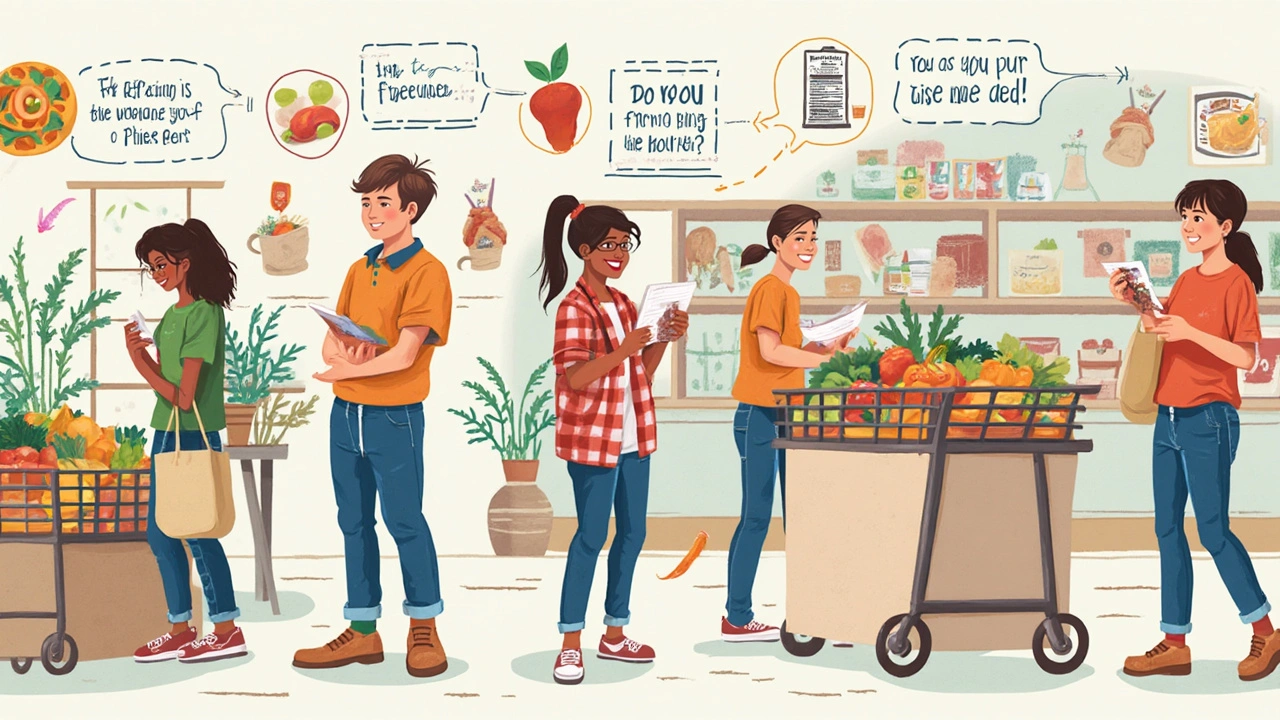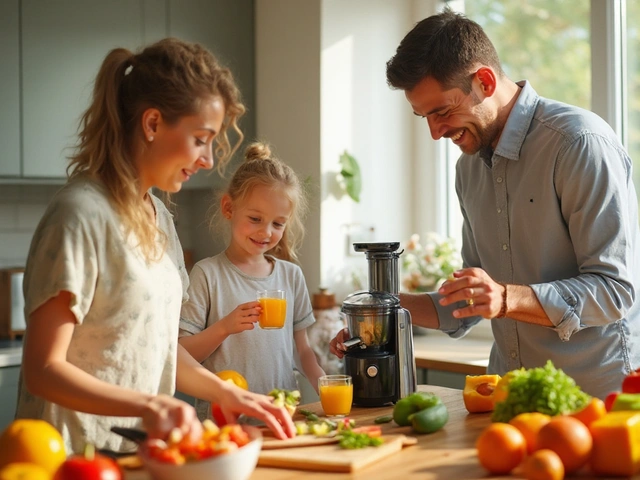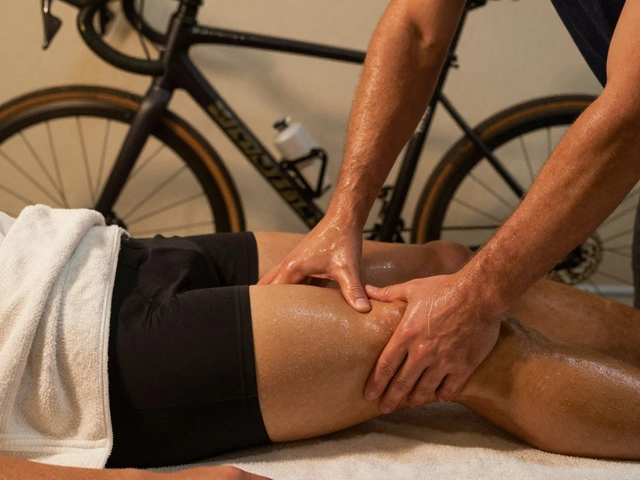If you search for the words "diet" or "nutrition" on TikTok or Instagram today, you'll probably see trending hacks, magic pills, or people swearing by one-size-fits-all rules. But here’s the kicker: Not a single ancient civilization survived on keto, juice cleanses, or three-day detox teas. They ate to live, not to look like an influencer. That’s why a healthy diet isn’t about fads—it’s about choices that help you feel better, move easier, and stay sharp, day after day. You don’t have to give up everything you love. What really matters is building habits that stick, not chasing wild promises or beating yourself up over a slice of birthday cake. Getting it right is easier than you think, and you truly can ditch the guilt without sacrificing taste or fun.
Why Diets Fail but Lifestyles Last
Let’s be honest: diets that promise fast results and strict rules sound tempting. “Lose 10 pounds in a week.” “Cut out all carbs forever.” If these quick fixes worked for most people, we’d all be supermodels by now. In reality, about 80% of those who lose weight on crash diets regain it within a year. That’s not because you’re weak or doomed—it’s how our bodies defend us against starvation. Our brains don’t know the difference between famine and a TikTok challenge. When you cut out whole food groups or slash calories, your metabolism slows down and hunger hormones fire up. It’s biology, not willpower. A randomized clinical trial from 2022 published in JAMA showed people who lost weight slowly and steadily by changing eating patterns kept it off much more successfully two years later.
Now, here’s what gets people stuck: thinking of “diet” as something temporary. Like they just grit their teeth for a month, they’ll arrive at the finish line, then go back to “normal.” Problem is, old habits creep back in. Foods you banned start looking irresistible. And soon, you’re right back at square one, often with a little bonus weight you didn’t ask for. The key to a healthy diet is making small, realistic changes and sticking to them. Your lifestyle should fit you—not the other way around.
This isn’t just about numbers on the scale. Eating well changes how you feel: more focused at work, better sleep, less anxious. For example, a study from Harvard found folks who ate consistently balanced meals—meaning veggies, lean proteins, and healthy fats—had 35% lower risk of depression over five years. You can absolutely start by adding, not subtracting: throw an extra handful of spinach in your omelette, toss some berries into your yogurt, or swap one soda a day for sparkling water. These tiny switches add up faster than you’d think.
It also helps to think about the "why," not just the "what." Maybe you want more energy to play with your kids, or to have fewer sick days. One tip: Write your reason on a sticky note and slap it on the fridge. That slice of pizza won’t look as tempting when you remember why you’re aiming for healthier choices. And remember, being healthy isn’t about being perfect—one off day doesn’t erase the progress you’ve made.
Chains like Blue Zones around the world—like Okinawa, Japan and Sardinia, Italy—share something in common: food as a way to nurture, connect, and celebrate, not just restrict. People living in these regions make small daily tweaks: walking to the market, sharing homecooked meals, eating plants as the main event, not an afterthought. These aren’t trends—they’re routines carried through generations. In short, diets fade. Lifestyles last.

Building a Healthier Plate—No Math Degree Needed
Ever tried counting every calorie or weighing every gram of food? Exhausting. And unnecessary. A great plate is about balance and color, not calculators. The U.S. Department of Agriculture’s updated "MyPlate" model gives an easy visual: half your plate fruits and veggies (as much variety as you can get!), a quarter whole grains (brown rice, quinoa, whole-wheat bread), and a quarter protein (chicken, beans, tofu, fish.) Don’t forget a little healthy fat—olive oil, nuts, seeds—because flavor matters!
You don’t need fancy superfoods. Most of the healthiest diets in the world are built on affordable basics: beans, lentils, oats, cabbage, potatoes, apples. Your body loves simple, regular meals made from scratch. Processed foods—think chips, soda, frozen dinners—are loaded with salt, sugar, and not much nutrition. But you don’t need to swear off all convenience foods, either. Frozen veggies are just as nutritious as fresh. Canned beans (rinsed) make weeknight dinners a breeze.
If you want real-world stats on what Americans actually eat, take a look at this breakdown from a recent CDC survey. You might spot a few surprises:
| Food Group | Average Daily Intake (Adults) | Recommended Intake |
|---|---|---|
| Vegetables | 1.4 cups | 2.5 cups |
| Fruit | 0.9 cups | 2 cups |
| Whole Grains | 0.7 oz | 3 oz |
| Added Sugar | 17 tsp | 6 (women) / 9 (men) tsp |
| Fiber | 16 g | 25-30 g |
Notice the gap? Most of us are missing out on fiber and fresh produce but getting way too much sugar. It’s not about perfection—just try sneaking in another fruit or veggie a day and swapping a soda for a glass of water a couple of times a week. If you love dessert (and who doesn’t?!), try baking apples with a sprinkle of cinnamon or mixing plain yogurt with berries and a drizzle of honey.
Protein is a big question, especially with so many magic shakes or bars on store shelves. Truth: most adults get enough protein, even if they rarely eat steak. Beans, lentils, tofu, eggs, and even leafy greens deliver plenty. It’s not about piling your plate with chicken breasts but about balance. If you want good fats, go for avocado toast or a handful of almonds. Restricting fat, like we did in the ‘90s, actually led folks to eat more sugar and processed carbs—harming heart health in the long run.
One trick lots of nutritionists love: start meals with a glass of water and a salad. You’ll fill up more on fiber and be less likely to overeat the heavier stuff. And speaking of tricks: don’t let yourself get “hangry.” Skipping meals slows your metabolism, messes with your mood, and leads straight to late-night fridge raids. Instead, prep snacks you can grab—carrot sticks, hummus, trail mix, or fruit.
Here’s a famous quote to nail the idea home:
“The food you eat can be either the safest and most powerful form of medicine or the slowest form of poison.”
– Ann Wigmore, raw food advocate and holistic health expert
Cooking at home does not mean hours at the stove. Sheet-pan veggie roasts, overnight oats, one-pot stews—these are lifesavers for busy people. Try Sunday batch-cooking pasta sauce, roasted veggies, or grains that you can mix and match all week. The less you stress over each bite, the easier it is to stick with the plan.

Real-Life Tips for Sticking to It—No Matter What
Now comes the part everyone dreads—how do you actually make healthy eating a daily thing, when life is already full? Start small. Pick one habit to focus on for a month. That could be eating breakfast every day, drinking an extra eight ounces of water, or swapping your usual lunch chips for veggies. Tiny victories matter. Once that feels automatic, layer in a new habit.
Don’t be afraid of a little trial and error. Not every cooking experiment will be a hit. Some nights you’ll reach for takeout, and that’s okay. Make your kitchen a place you actually want to be—play music, cook with someone you love, or reward yourself with a cozy after-dinner routine. Make shopping faster by planning three go-to meals for busy weeks, and keep those ingredients on hand. When you have healthy stuff available, you’re way less likely to order emergency pizza.
Rest is just as important as the food on your plate. When you’re tired, your body practically begs for sugar and simple carbs—the quickest way to crash and burn. Make sleep a priority, aim for 7 to 9 hours, and watch your cravings settle down. New research even shows that lack of sleep messes with the hormones that regulate hunger and appetite—so don’t fight your biology, work with it.
Eating out doesn’t have to undo your effort. Check the menu online, split a main dish with a friend, or ask for dressings and sauces on the side. If you want dessert, share it. Don’t make restaurant meals a test of willpower—they’re a chance to enjoy food and company guilt-free. One good strategy is the “half-now, half-later” approach: eat half and save the rest for tomorrow’s lunch.
Switch your social media feed, too. Follow doctors, registered dietitians, and real people sharing healthy, doable recipes—not just abs and abs of #ad content. Social support is huge: recruit a friend for weekend meal prep, text each other your progress, or start a family dinner tradition. These little social nudges have been shown to double your chances of forming healthier habits, according to a 2023 behavioral science analysis.
If you want to track progress, don’t obsess over the scale. Notice how your clothes fit, how you sleep, or how much energy you have by 3 p.m. That’s when healthy eating actually pays off, and it feels a lot more motivating than watching a number wiggle up and down.
One last tip: show yourself some grace. Life is unpredictable. Sometimes, the best thing for your health is the big slice of cake at your best friend’s wedding, the late-night ramen after a breakup, or a lazy Sunday pancake breakfast. Health isn’t an all-or-nothing deal. The next meal is just another chance to nourish, not punish, yourself.
Forget what you’ve been told about willpower and punishment. Embrace routines and small joys. Eating better is about making life richer, day to day—not prepping yourself for swimsuit season or squeezing into a dress for one night. You get one body, and every good choice is a gift. That’s why healthy eating, when it becomes your norm, is the most freeing lifestyle—not a fleeting fad.






